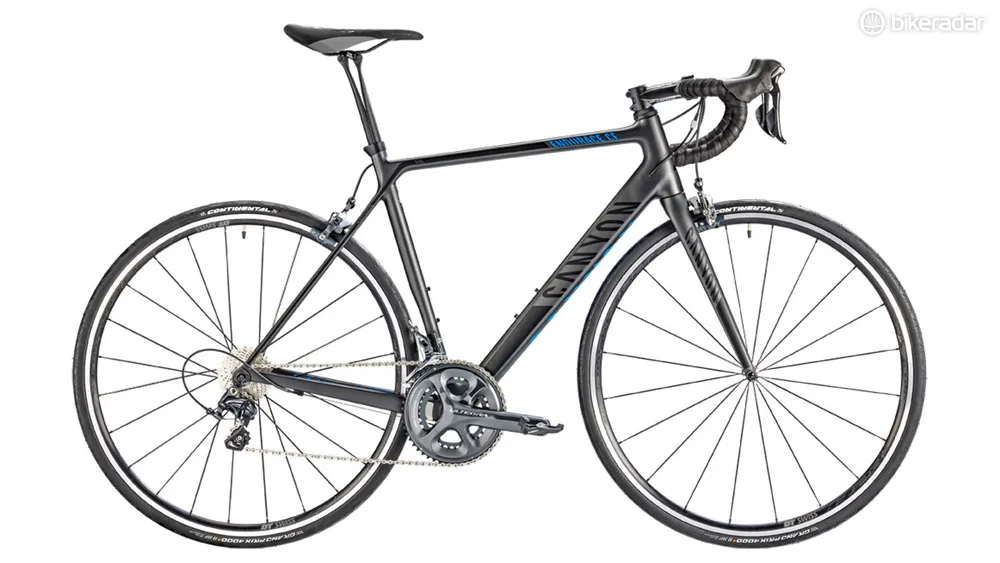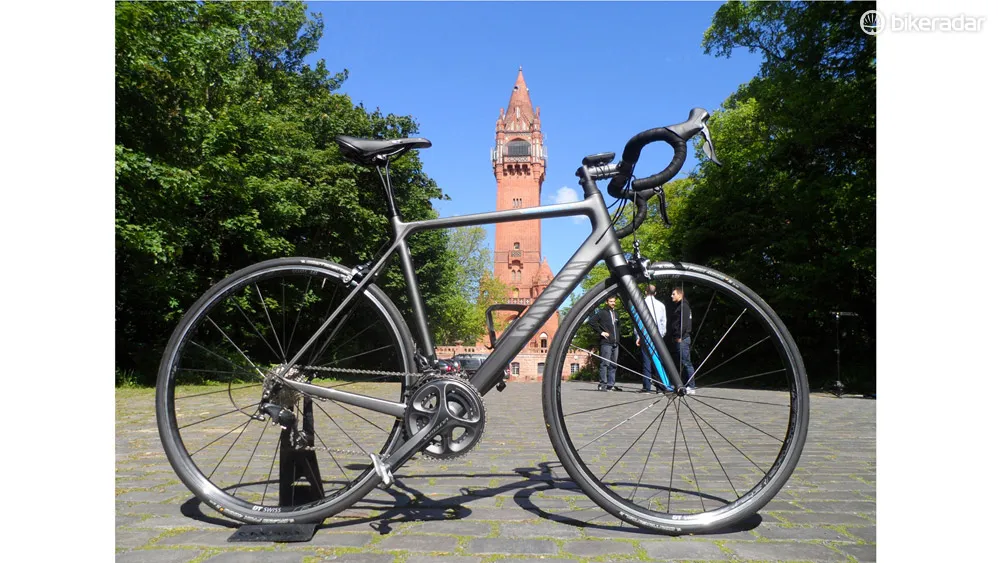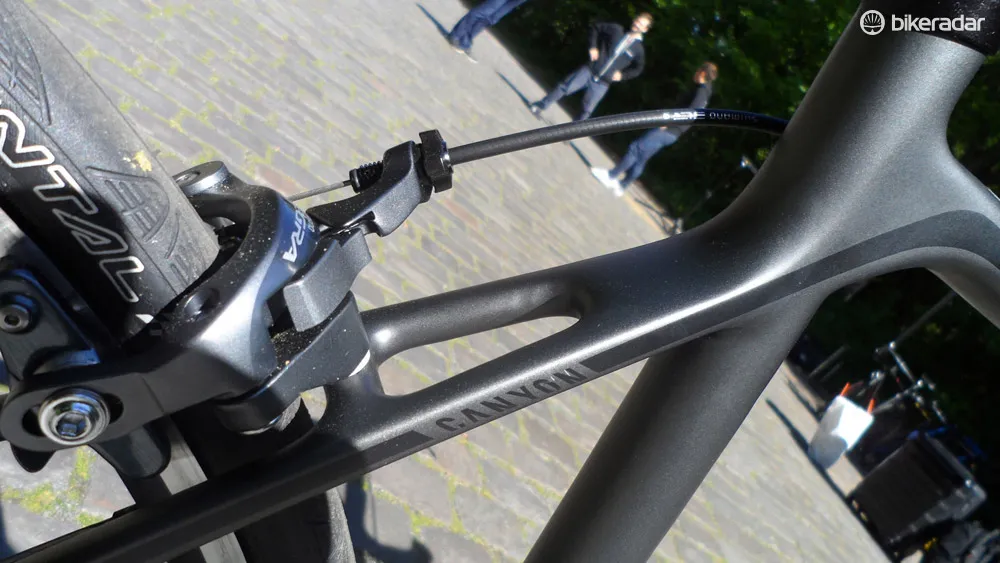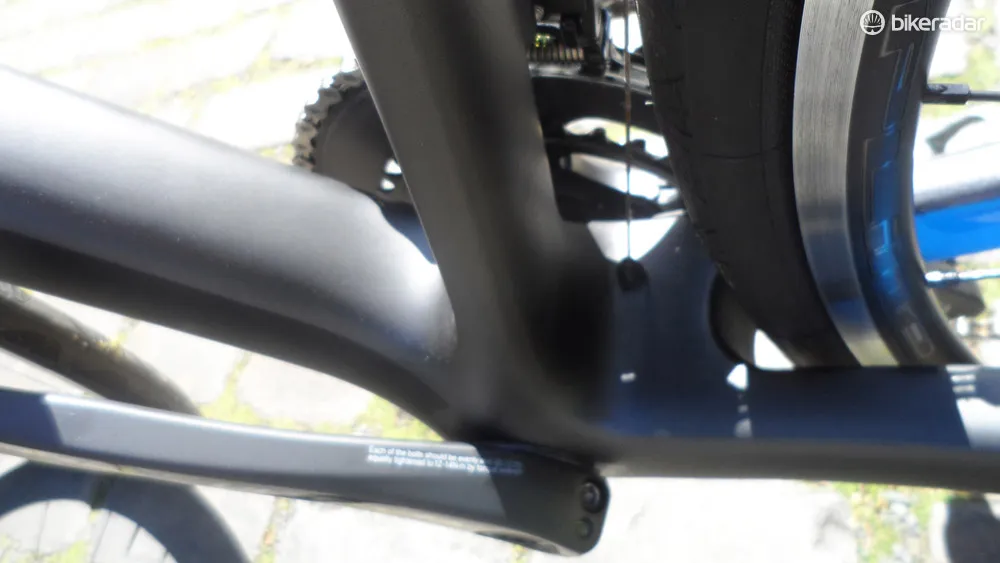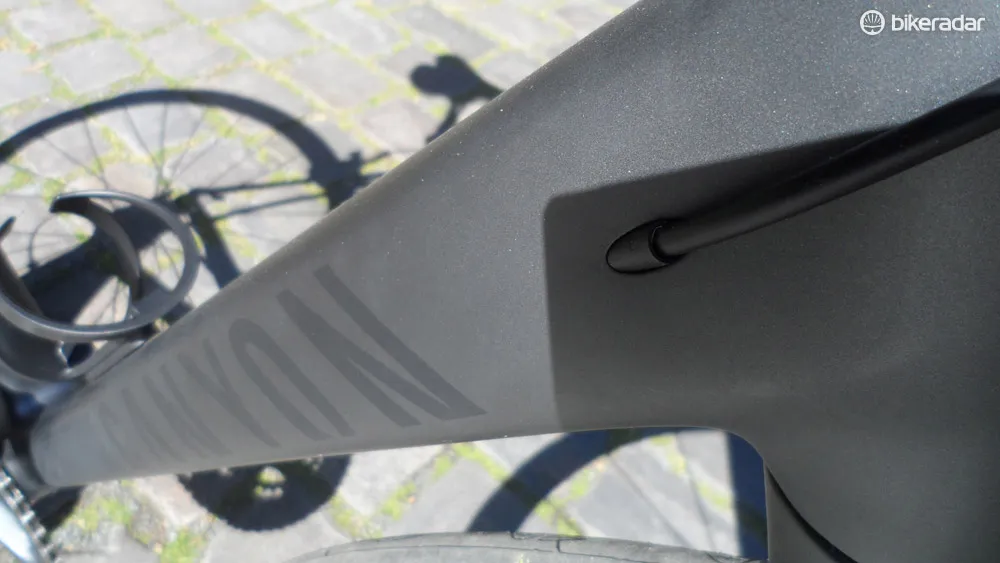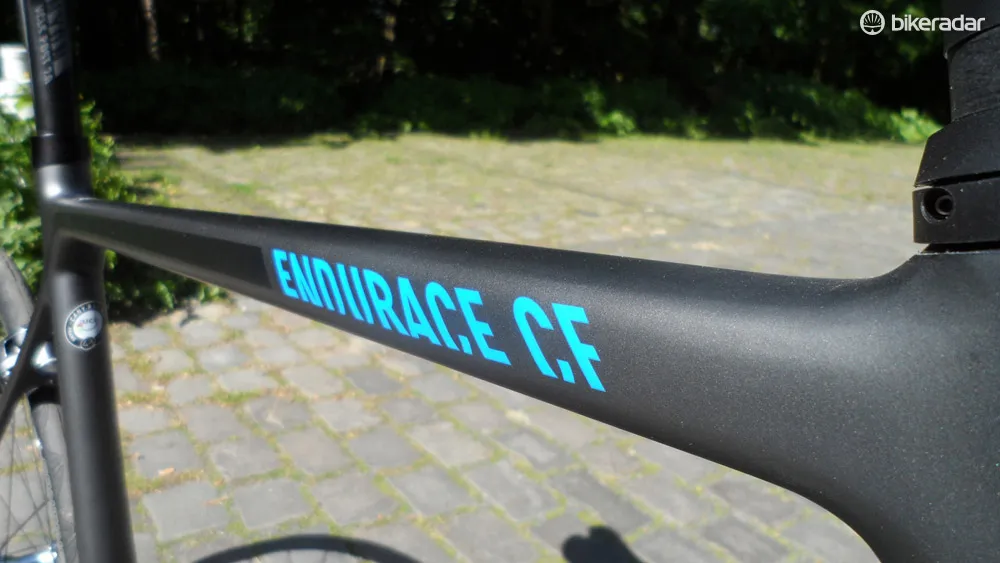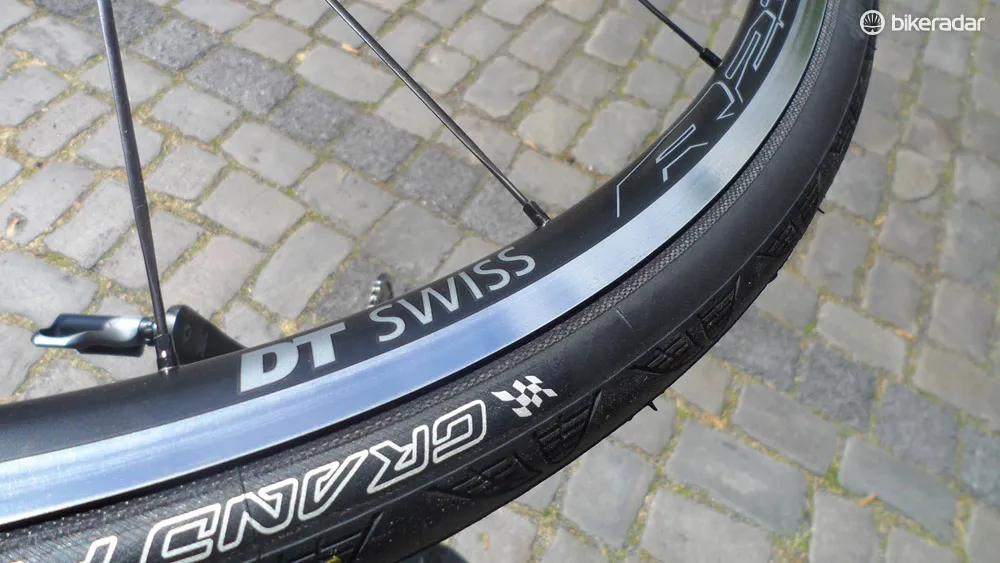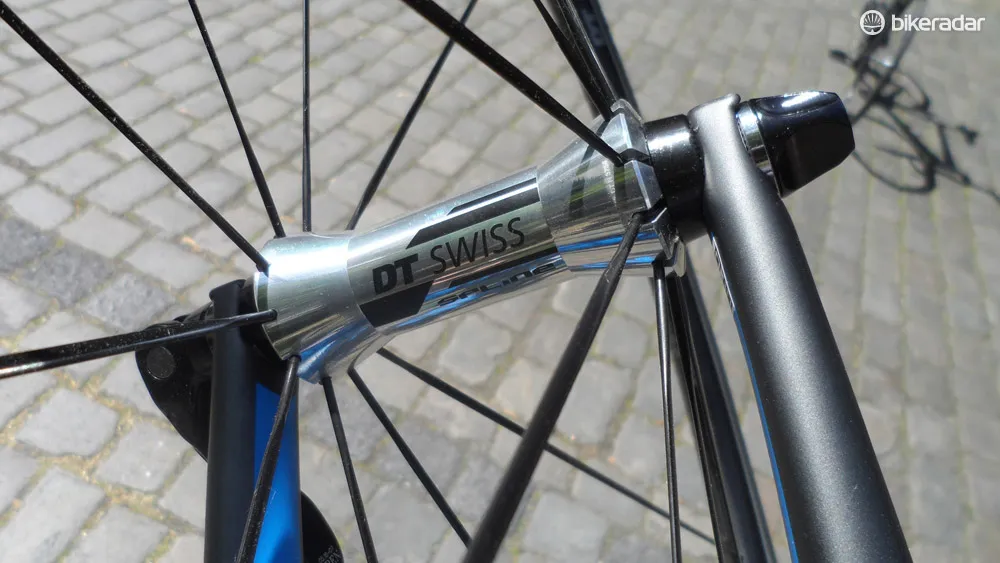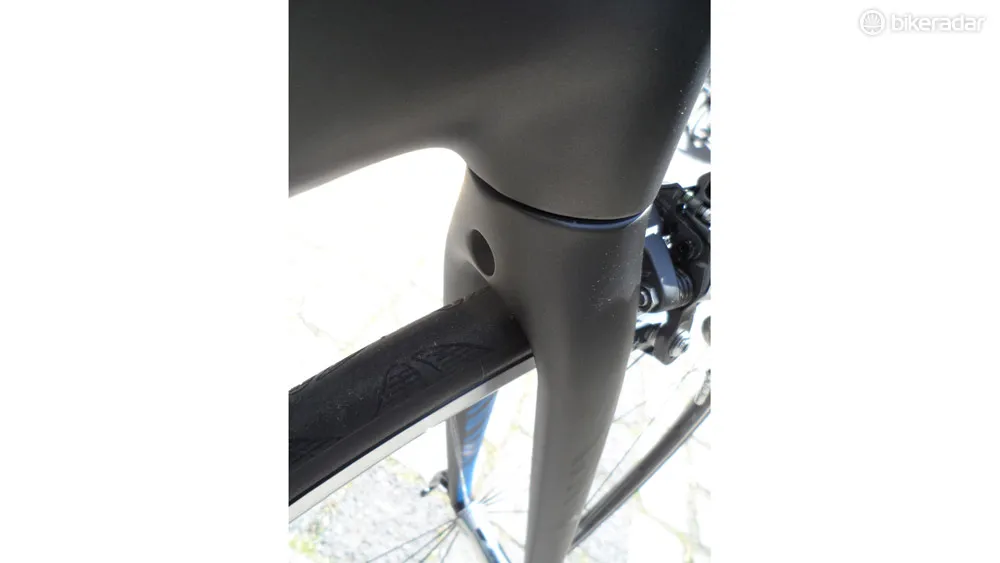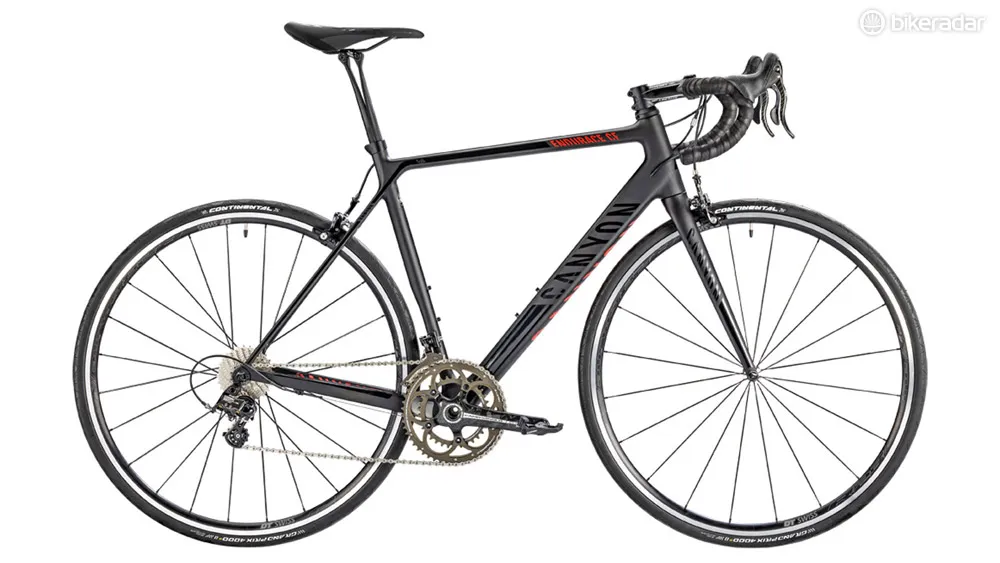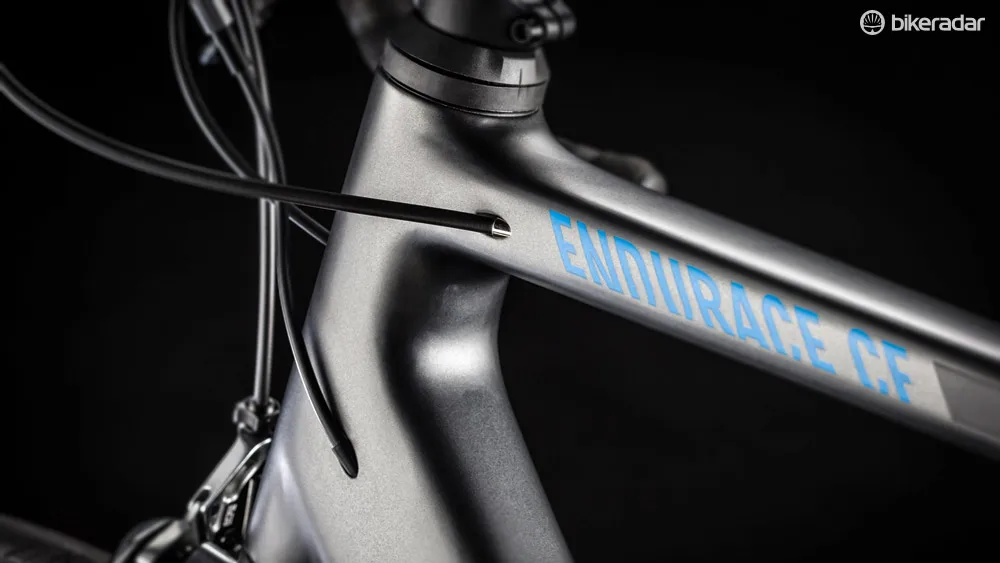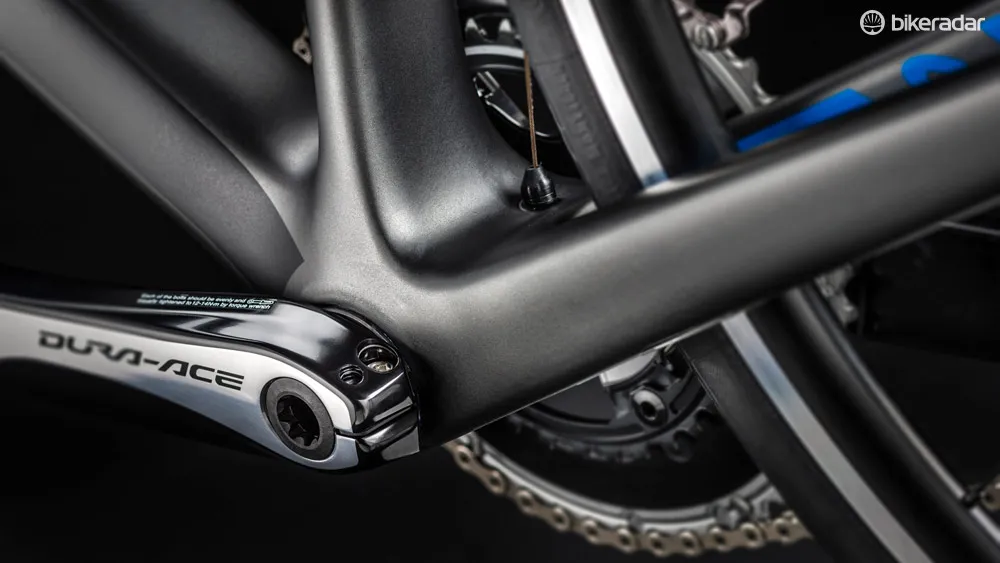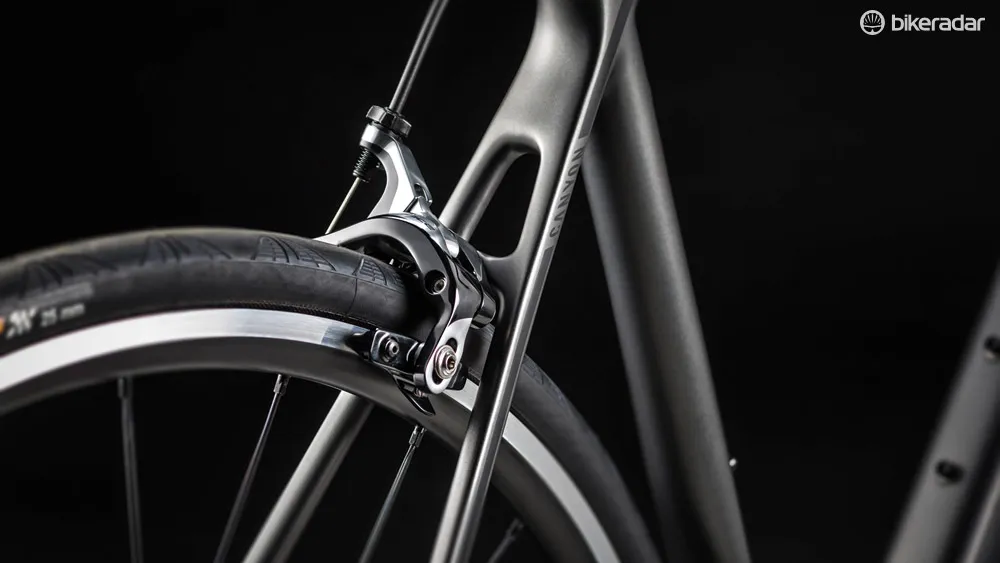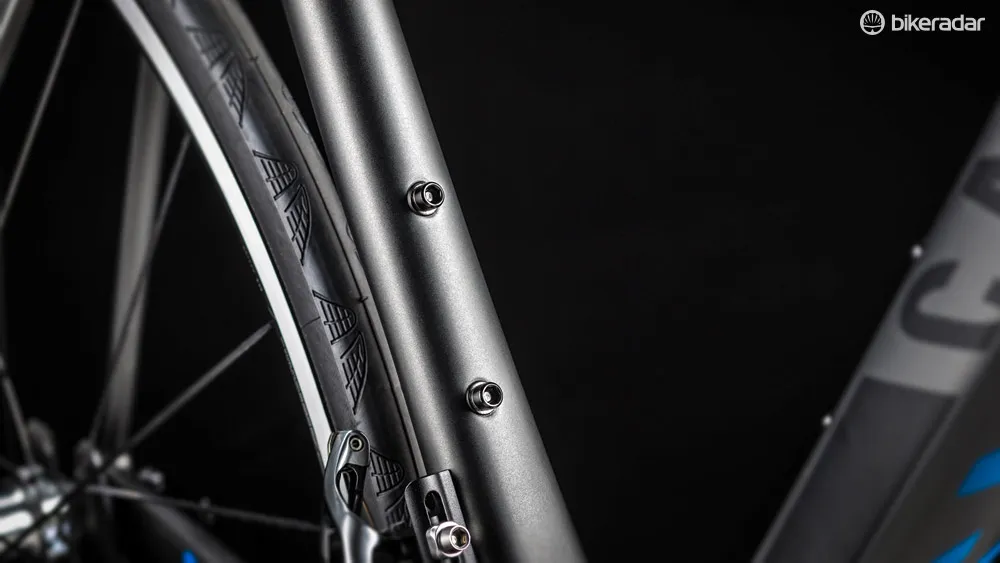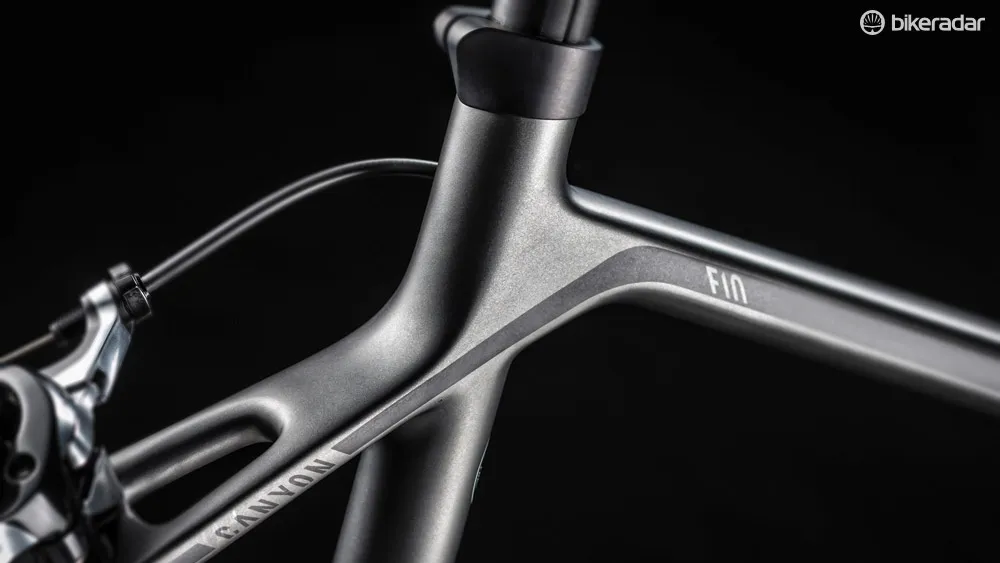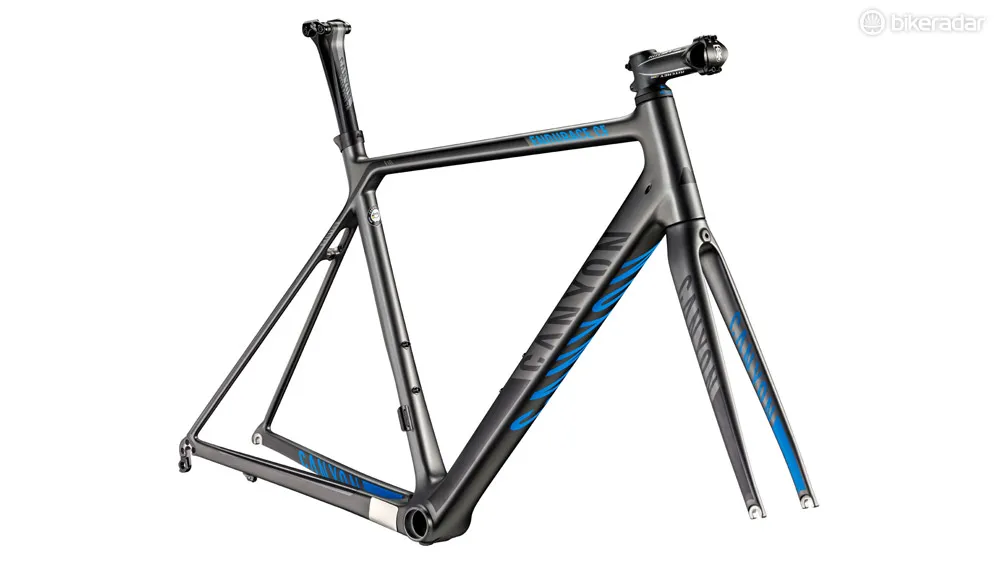Canyon's range of highly-engineered race machines sold at direct-to-market prices has been incredibly successful for the German brand. But up until now, its focus (for road bikes at least) has always been on racing. Aside from the entry-level aluminium Roadlite, all Canyon’s road bikes have aggressive geometry, fast steering responses and low weight at their core.
With the Endurace, Canyon has created a whole new platform, one that chief engineer Michael Adomeit describes as “having comfort within the core of its concept, yet it is still very much a capable racing bike”.
Product manager Sebastien Jadzcak expands: “We named it the integral comfort concept, which means we use our VCLS technology (vertical compliance, lateral stiffness) throughout. On the frame itself we've used VCLS design at the seatstay, seat tube and top tube junction, we have the One-One Four SL VCLS fork and, of course, our own VCLS leaf-spring 2.0 seatpost.”
What does this actually mean for the riders? “We wanted to make every part [of the frame] and every component used provided towards the key idea of the concept,” said Michael. “That means we chose 25c tyres for the whole range, on DT Swiss's new Spline R23 wheels, which have a wider profile (18mm) than a standard rim (15mm). This shapes the tyre better, improves rolling resistance [by giving a wider but considerably shorter footprint] and adds a lot of comfort. All of the range has fi:zi’k Aliante saddles and our VCLS 2.0 post. At the front we chose the Ritchey WCS Evocurve range of bars, as the compact drop and bar straight shape offers a comfortable hold.”
The frame itself is typically Canyon, with understated looks that mask plenty of clever engineering under its skin. According to Michael: “The geometric shapes of the frame dictates the deformation, and we've designed the composite layup accordingly.”
The seat tube follows on from Canyon's usual Maximus seat tube on the Ultimate, the round shape changes profile just below the front mech braze-on. It flattens here to allow the tube to bend rearwards. The top tube is wider than it is deep; its width helps it resist lateral flex, but its smaller vertical walls (the tube is fairly square in profile) allow it to bend with the seat tube.
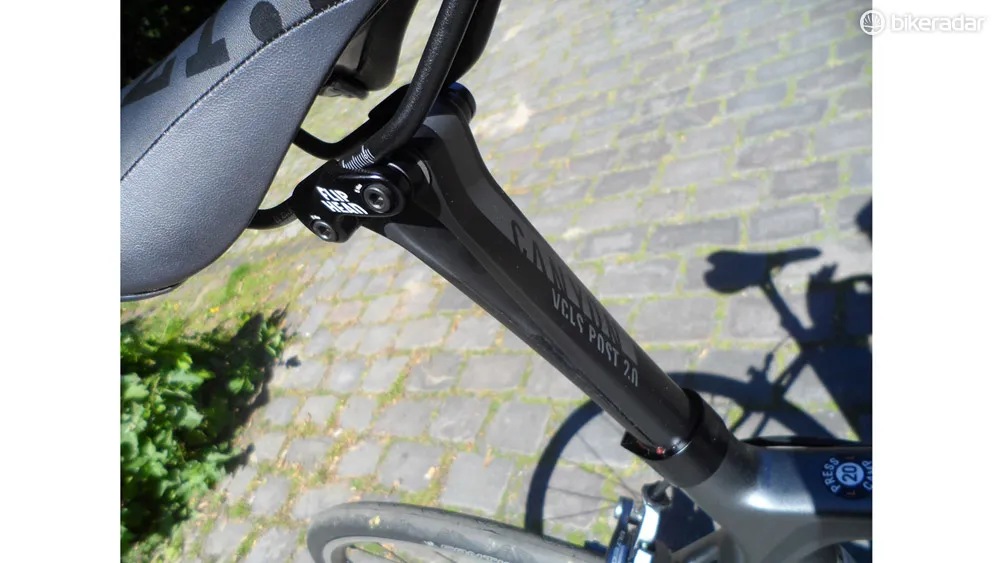
The VCLS 2.0 post adds plenty of comfort, giving flex to the rear end
The VCLS seatstays are designed to move with the other tubes, allowing plenty of road-buzz-killing movement. This, combined with the high-flex of the VCLS 2.0 post, makes for a bike with a marked smoothness at the rear, especially for the usually firm carbon we've seen from Canyon until now.
The frame’s front end and bottom bracket need to be free of lateral movement to ensure confident handling, so the design incorporates a large oversized and tapered head tube, and the hugely oversized downtube meets the large and wide press-fit bottom bracket stays, which in turn flow into large square-profile chainstays.
Making the front end and undertray this solid could have a negative effect on comfort elsewhere, but Canyon has a clever trick up its sleeve, in the form of the One-One-Four SL fork. Unlike the One-One-Four found on the Ultimate CF, this fork sits in the frame 6mm higher on its lower bearing race. It effectively lifts the front end without having to use a long ungainly head tube, making the bike look more ‘race’ than ‘recreation’.
The other clever touch is the taper on the fork’s steerer; by starting the taper significantly lower than the Ultimate’s version, Canyon has engineered more movement from the fork itself, making the front end smoother. The head tube is still a little longer than the Ultimate’s, but it is possible to get a low front position should you want to. Overall, the dimensions mirror the Ultimate platform in the frame angles, but with a 9mm shorter reach and 5mm longer chainstays.
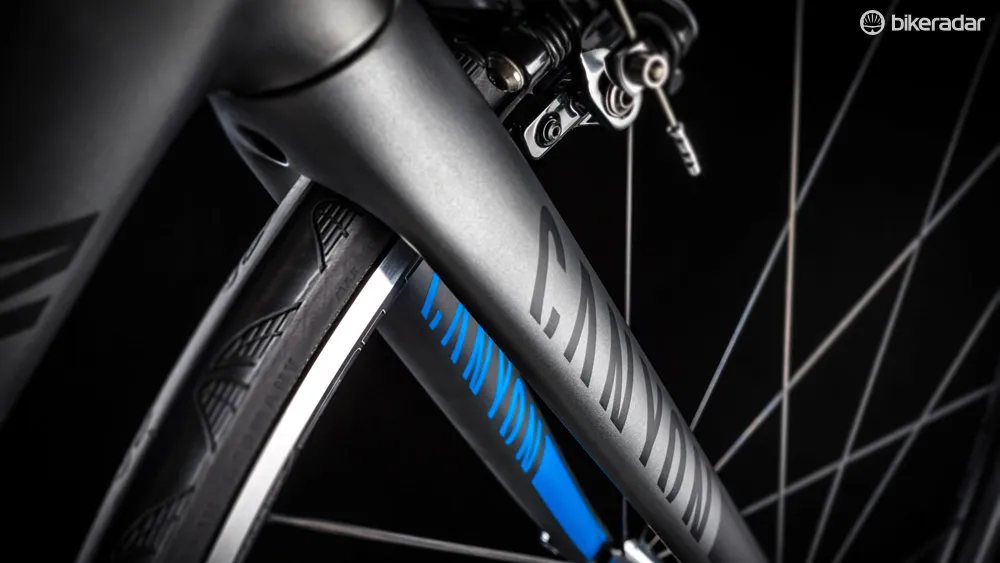
The One-One-Four fork seats 6mm higher at the bottom bearing race than the One-One-Four found on the Ultimate
The medium frame weighs a claimed 1,040g, and the new fork weighs a claimed 340g. The frameset is available separately for around £1,000, with a claimed weight of 1,470g including the seat clamp and the Acros headset.
Sizing and pricing
The Endurace is available in seven sizes, and four configurations. All share the fi’zi:k saddle, DT Swiss wheels, Continetal tyres, and Ritchey bar and stem, with only groupset choice separating them.
The range starts with the new 105 (11-speed) model at £1,399. For Ultegra you’ll pay £1,699, Campagnolo Chorus costs £2,199, and the range is topped with what looks to be great value Dura-Ace for £2,599.
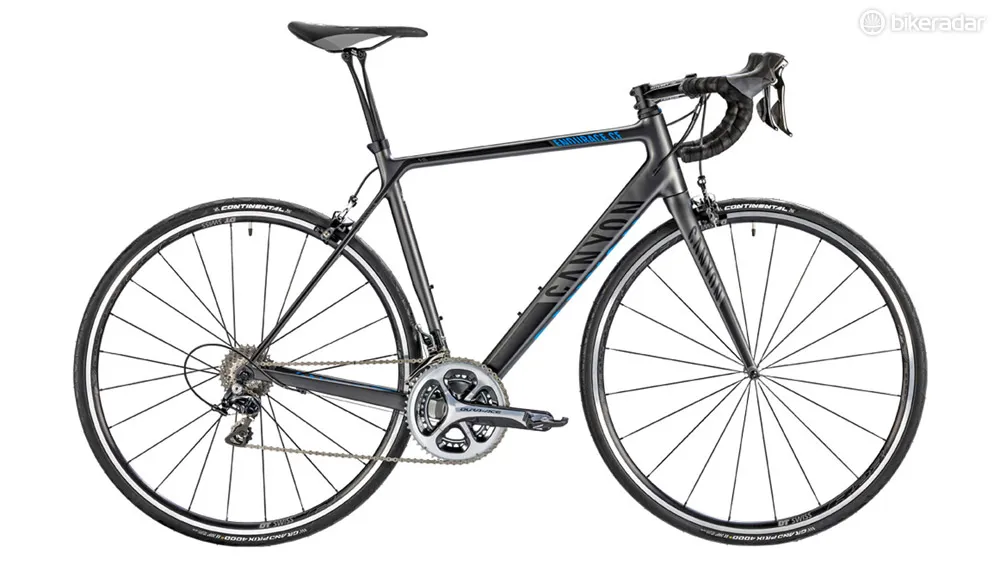
The top-of-the-range Dura-Ace Endurace
Initial ride impressions
We got to ride the bike for a fast couple of hours with Eric Zabel, Canyon team liaison and part of the development team for Canyon’s road bikes. While the surfaces were typically German – exclusively super smooth tarmac – we did manage to find a couple of cobbled sections and overall the Endurace felt very, very good.
The mods to the front end haven't removed the typically exciting and rapid responses that we love about Canyon bikes. The back-end smoothness is impressive too; how much of that is down to the frame, we couldn't say, but the frame combined with the impressive VCLS 2.0 post and the 25c conti tyres running on wider than standard rims is quite brilliant. As it’s a whole bike we're testing (Canyon considers the Endurance concept to be about it all), we'd have to say it’s a resounding success.
We've got the chance to ride the Endurace again in Berlin's Bikeathon. That 120km ride should give us a far better idea of the Endurace's charms, so we'll report back with a full First Ride Review soon.
